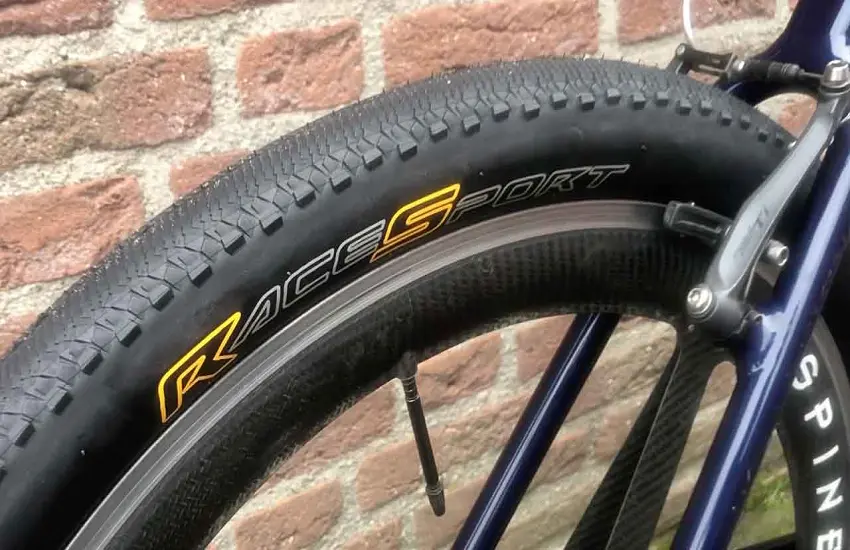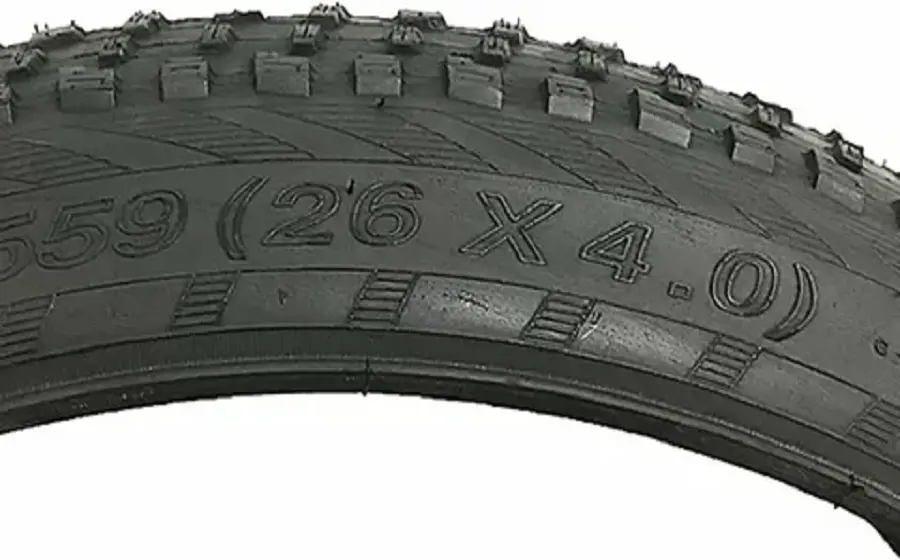From dusty mountain trails to city streets, 26 inch bike tires have shaped cycling history. While newer sizes dominate today’s market, these classic tires remain a practical choice for many riders. Let’s dive into everything you need to know about 26-inch bike tires.
The Evolution of 26 Inch Bike Tires
Back in the 1980s, 26-inch tires ruled the mountain biking world. They emerged from early cruiser bikes and became the standard for off-road riding. Today’s riders might wonder why this size endures.
Quick Facts:
- First standardized in the 1930s
- Dominated MTB market until 2010
- Still common in developing countries
- Ideal for riders under 5’6″
Understanding 26-Inch Tire Basics
Here’s the thing about 26-inch tires – that number doesn’t tell the whole story. The actual measurement system is more complex than you’d think.
Real Measurements Matter
The “26-inch” refers to the approximate outer diameter, but the ISO measurement (559mm) is what you really need to know. Here’s a breakdown of common sizes:
| Width Range | Best Used For | Typical Pressure Range |
| 1.95″-2.1″ | XC/Trail | 25-35 PSI |
| 2.2″-2.4″ | All-Mountain | 22-32 PSI |
| 2.5″+ | Downhill | 20-30 PSI |
Modern Applications & Performance
Don’t write these tires off just yet. They’ve got some serious advantages:
Strengths:
- Quicker acceleration
- Lighter overall weight
- More responsive handling
- Easier to maneuver in tight spaces
Trail Performance
On technical singletrack, 26-inch tires shine. Their smaller diameter means:
- Faster direction changes
- Lower center of gravity
- Better obstacle clearance
- Improved brake modulation
Urban Riding
City riders often prefer 26-inch tires because:
- They fit older frames
- Provide snappy acceleration
- Handle tight turns well
- Offer plenty of tire choices
Choosing the Right 26-Inch Tire
Let’s break down your options based on riding style:
Trail Riding
Best Features to Look For:
- Knobby tread pattern
- Reinforced sidewalls
- Tubeless compatibility
- 2.1″-2.4″ width
Pro Tip: Consider dual-compound tires for better grip and longevity.
Commuting
Key Characteristics:
- Smooth center tread
- Reflective sidewalls
- Puncture protection
- 1.95″-2.1″ width
Top Tire Recommendations
Trail Riding Champions
- Maxxis High Roller II
- Outstanding grip
- Great in wet conditions
- Average weight: 870g
- Price: $55-65
- Schwalbe Hans Dampf
- All-round performer
- Excellent durability
- Average weight: 895g
- Price: $60-70
Urban Warriors
- Continental Town & Country
- Bulletproof reliability
- Low rolling resistance
- Average weight: 590g
- Price: $25-35
Maintenance & Care
Proper maintenance extends tire life significantly. Here’s what to watch:
Pressure Monitoring
Check pressure weekly:
- Morning rides: Check before riding
- Temperature changes: Adjust accordingly
- Season changes: Review pressure needs
Wear Indicators
Look for these signs:
- Squared-off center tread
- Visible wear bars
- Cracked sidewalls
- Uneven wear patterns
Expert Tips & Tricks
Converting to Tubeless
Follow these steps:
- Clean rim thoroughly
- Install tubeless tape
- Mount tire with sealant
- Inflate rapidly to seat beads
Pro Tip: Use soap solution on tire beads for easier mounting.
Performance Tweaks
- Front/rear pressure differential
- Seasonal compound choices
- Tread direction optimization
- Rotation schedule
Future of 26-Inch Tires

While not leading the market, 26-inch tires aren’t disappearing. Manufacturers continue developing new models with:
- Advanced compounds
- Lighter materials
- Better puncture protection
- Modern tread designs
Market Availability
Major brands still producing 26-inch tires:
- Maxxis
- Schwalbe
- Continental
- WTB
- Kenda
Case Study: Why Some Pros Still Choose 26″
Professional rider Maria Thompson still races 26-inch tires in technical enduro events. Her reasons:
- Better handling in tight switchbacks
- Faster acceleration between features
- More tire options in her preferred compounds
- Lighter overall bike weight
“On technical courses, my 26-inch setup gives me an edge in the tight sections. The quick handling lets me take lines other riders can’t.” – Maria Thompson, Pro Enduro Racer
Making the Right Choice
Consider these factors when choosing 26-inch tires:
Rider Factors:
- Height and weight
- Riding style
- Terrain type
- Budget constraints
Bike Compatibility:
- Frame clearance
- Rim width
- Brake type
- Intended use
Conclusion:26 Inch Bike Tires
26-inch bike tires remain a viable choice for many riders. They offer:
- Proven performance
- Wide availability
- Excellent handling
- Cost-effective options
Whether you’re maintaining a classic mountain bike or building a nimble commuter, 26-inch tires deliver reliable performance. Focus on matching the tire to your riding style and maintaining them properly.
Consider your riding needs, local terrain, and bike compatibility when choosing 26-inch tires. With proper selection and maintenance, these classic sizes can provide years of enjoyable riding.
Frequently Asked Questions About 26-Inch Bike Tires
Here’s what riders often ask about 26-inch bike tires:
Q: Can I still find quality 26-inch tires in 2024?
A: Absolutely! Major manufacturers like Maxxis, Schwalbe, and Continental continue producing premium 26-inch tires. While the selection isn’t as vast as 27.5″ or 29″ options, you’ll find high-quality tires for every riding style. Companies like Maxxis still develop new compounds and tread patterns for their 26-inch lineup, especially in popular models like the High Roller II and Minion DHF.
Q: Are 26-inch tires good for tall riders?
A: While 26-inch tires can work for riders of any height, they’re typically ideal for cyclists under 5’8″. Taller riders might benefit from larger wheel sizes (27.5″ or 29″) for better roll-over capability and ground clearance. However, if you’re a tall rider who prioritizes quick handling and acceleration, 26-inch tires remain a valid choice, especially for technical terrain.
Q: What pressure should I run in my 26-inch tires?
A: The ideal pressure depends on:
- Your weight
- Tire width
- Riding style
- Terrain type
General Guidelines:
| Rider Weight | XC/Trail | All-Mountain | Downhill |
| Under 150lbs | 28-32psi | 25-28psi | 22-25psi |
| 150-180lbs | 30-34psi | 27-30psi | 24-27psi |
| Over 180lbs | 32-36psi | 29-32psi | 26-29psi |
Q: Can I convert my old 26-inch wheels to tubeless?
A: Most modern 26-inch rims can be converted to tubeless, even if they weren’t originally designed for it. You’ll need:
- Tubeless rim tape
- Tubeless valves
- Tubeless-ready tires
- Sealant
- Patience during setup
Q: How long do 26-inch tires typically last?
A: Lifespan varies based on:
- Riding conditions
- Maintenance habits
- Tire compound
- Riding style
Expected Mileage:
- Trail tires: 500-1,500 miles
- XC tires: 1,000-2,500 miles
- Urban tires: 2,000-3,000 miles
- Premium compounds typically last 20-30% longer

With over 9 years of dedicated experience in the automotive industry, I am passionate about all things automotive. My journey began with a deep curiosity for automobiles, which led me to delve deeper into their mechanics, technology and trends. My expertise spans various aspects of the automotive world, from the latest electric vehicles to classic car restoration techniques. Through my articles, I aim to share my knowledge and insights, helping readers stay informed and inspired in the fast-paced world of the automobile.











